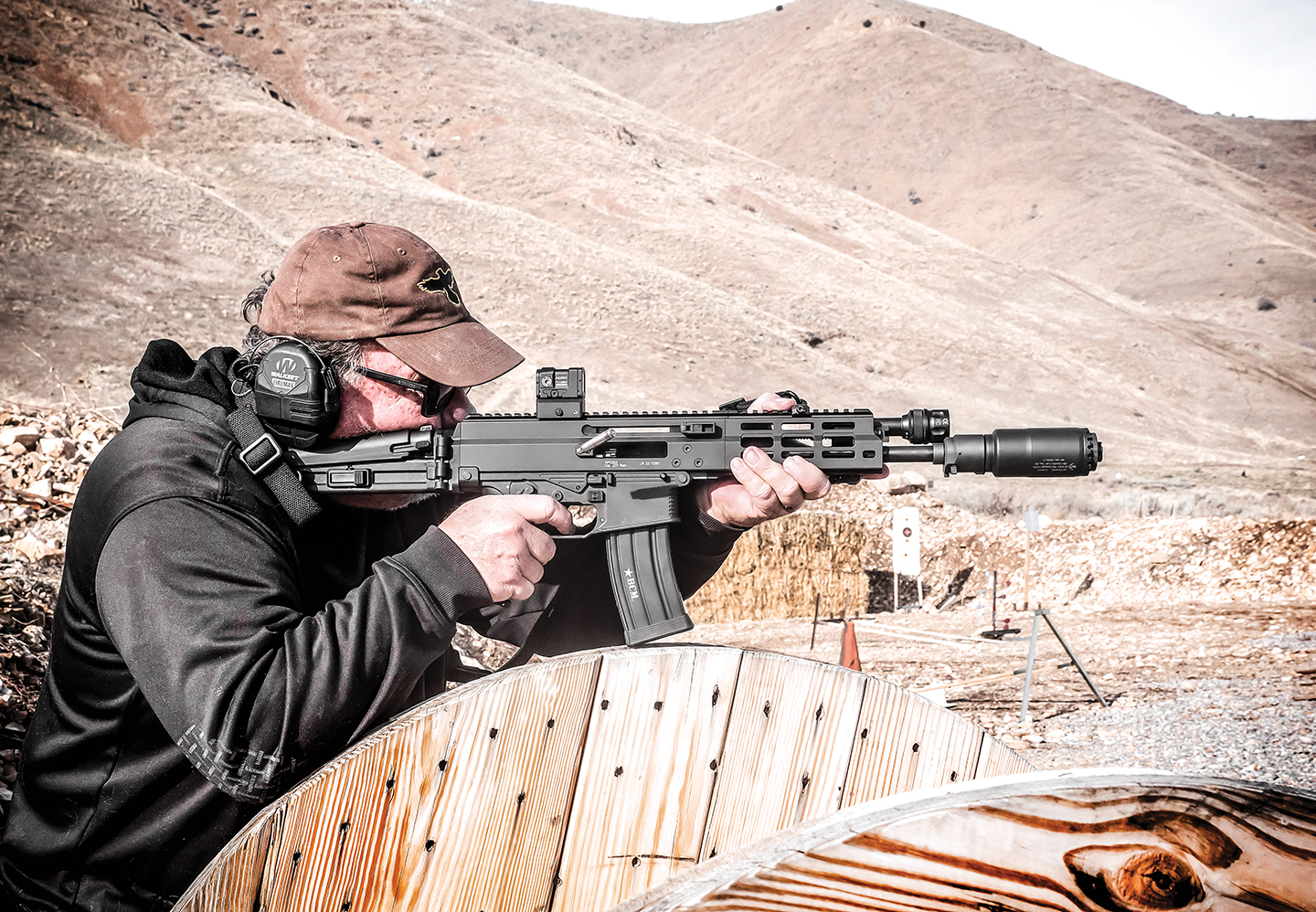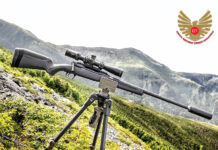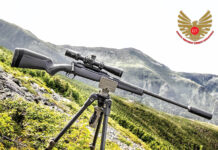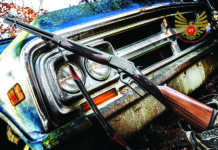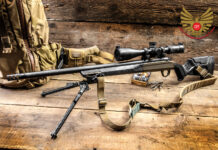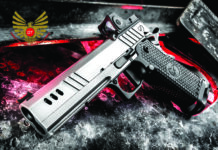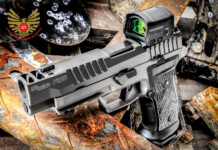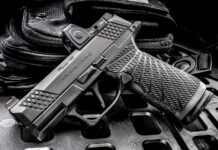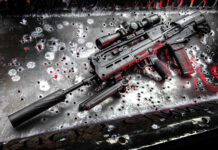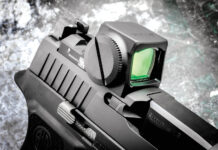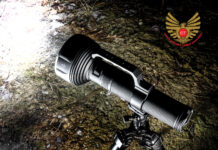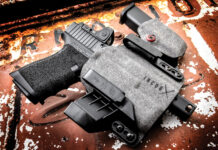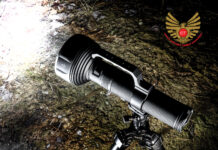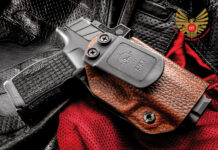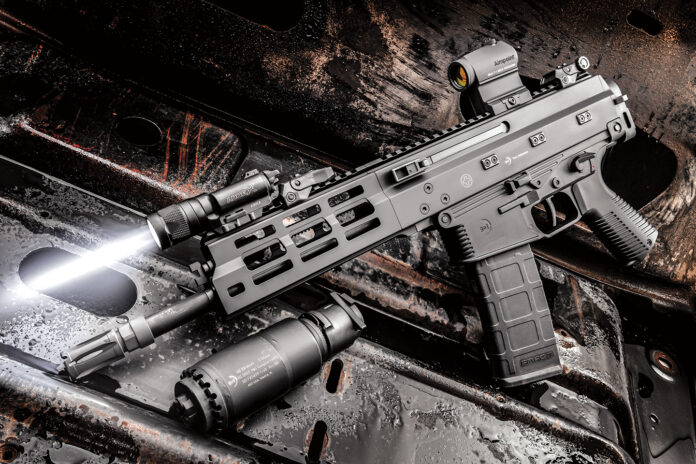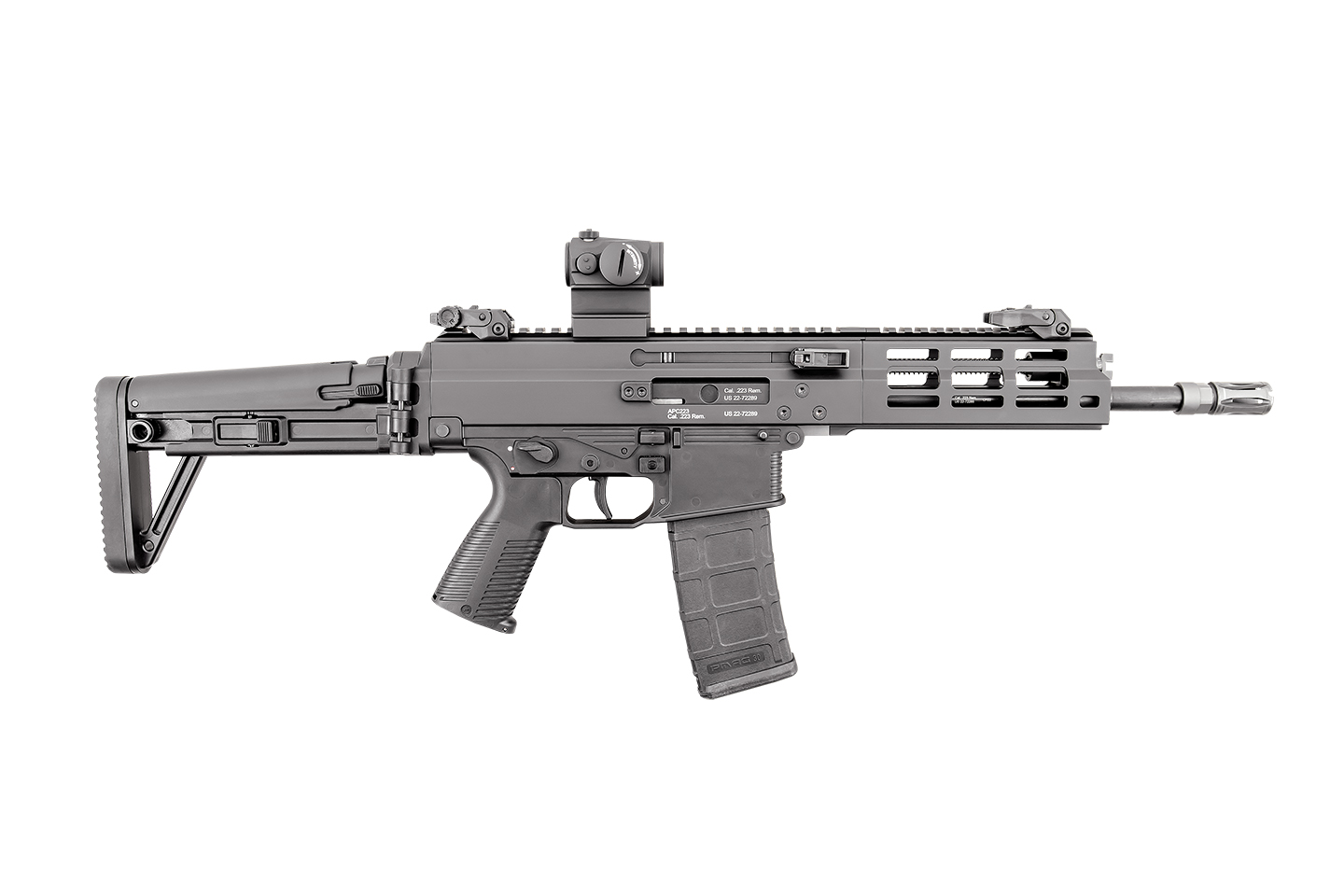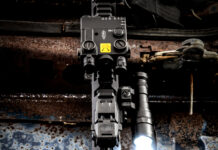B&T APC223 PDW
By: Dave Bahde
PDW also stands for “Precision Done Well” in the case of this Swiss-made gem
While the USA is solidly locked into just about anything AR, or something very similar, the rest of the world is heading in a different direction. Going all the way back to my initial testing and fielding of the HK G36 in 2000 and then testing the Beretta ARX 160 in 2011, I can see the virtues of stepping outside the Stoner rifle box. Europe is focusing on gas-piston rifles largely constructed of polymer, with ambidextrous controls and folding stocks. The CZ Bren 2 is a good example and having tested both “pistol” and carbine versions of this platform, they are amongst my favorite rifles. B&T USA’s Swiss-made APC223 (actually chambered in 5.56x45mm NATO) is another example of a similar design and something I’ve been looking forward to testing for some time now. It didn’t disappoint.
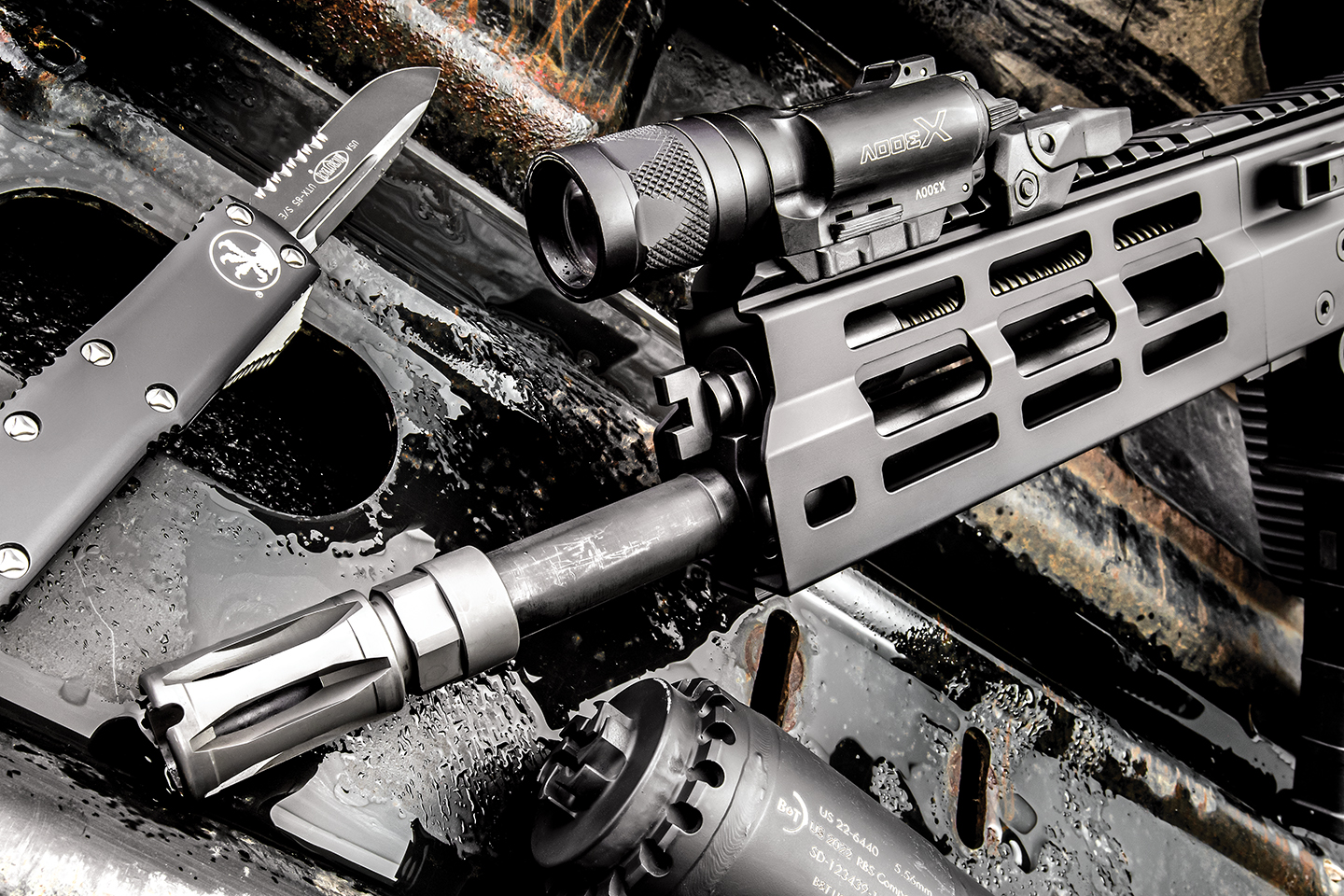
B&T USA APC223
Available with barrel lengths ranging from 8.7 to 16.5 inches, my APC223 test model was the short-barrel-rifle PDW model with the 10.30-inch barrel and adjustable/folding MBT Pro stock. The PDW is a semi-automatic SBR (short-barreled rifle) and available to anyone willing to jump through the commensurate NFA hoops and that lives in a state where an SBR is legal to possess. Although not shown on their website, a pistol version of the same gun, which comes sans the buttstock, is also available for those who want to add a stock later and complete the appropriate NFA forms; installing a buttstock on this platform is very simple. Additionally, versions of the APC are available in 300 BLK (APC300) and .308 Win (APC308).
The upper receiver of the APC223 is the serialized part, allowing for easy and inexpensive replacement of the polymer lower receiver if required; like an AR, two push pins keep the upper and lower receivers attached. Controls are also similar to AR, with a two-stage trigger, ambidextrous bolt and magazine releases and safety selector. The handgrip is AR compatible. With its rugged construction, cheek-height and length-of-pull adjustments, and ability to be folded, the MBT stock is an outstanding piece of equipment, but B&T also makes an adapter to mount an ACR stock as well as the older UMP style stocks. B&T also provided one of their latest RBS suppressors for testing, which uses their ingenious A2 flashider attachment method (RBS556A2). This newer RBS (reduced backpressure) design offers excellent sound suppression along with significantly reduced back pressure and gas blowback into the shooter’s face. Overall length (including the mount) is a very-compact 6.60 inches, and it interfaces and locks up rock-solid on any Mil-Spec A2 flashider. Having used their A2 attachment before with the company’s 2022 On Target Editors’ Choice Award-winning Rotex-X suppressor, it is one of the easiest-to-use and most secure mounts currently on the market.
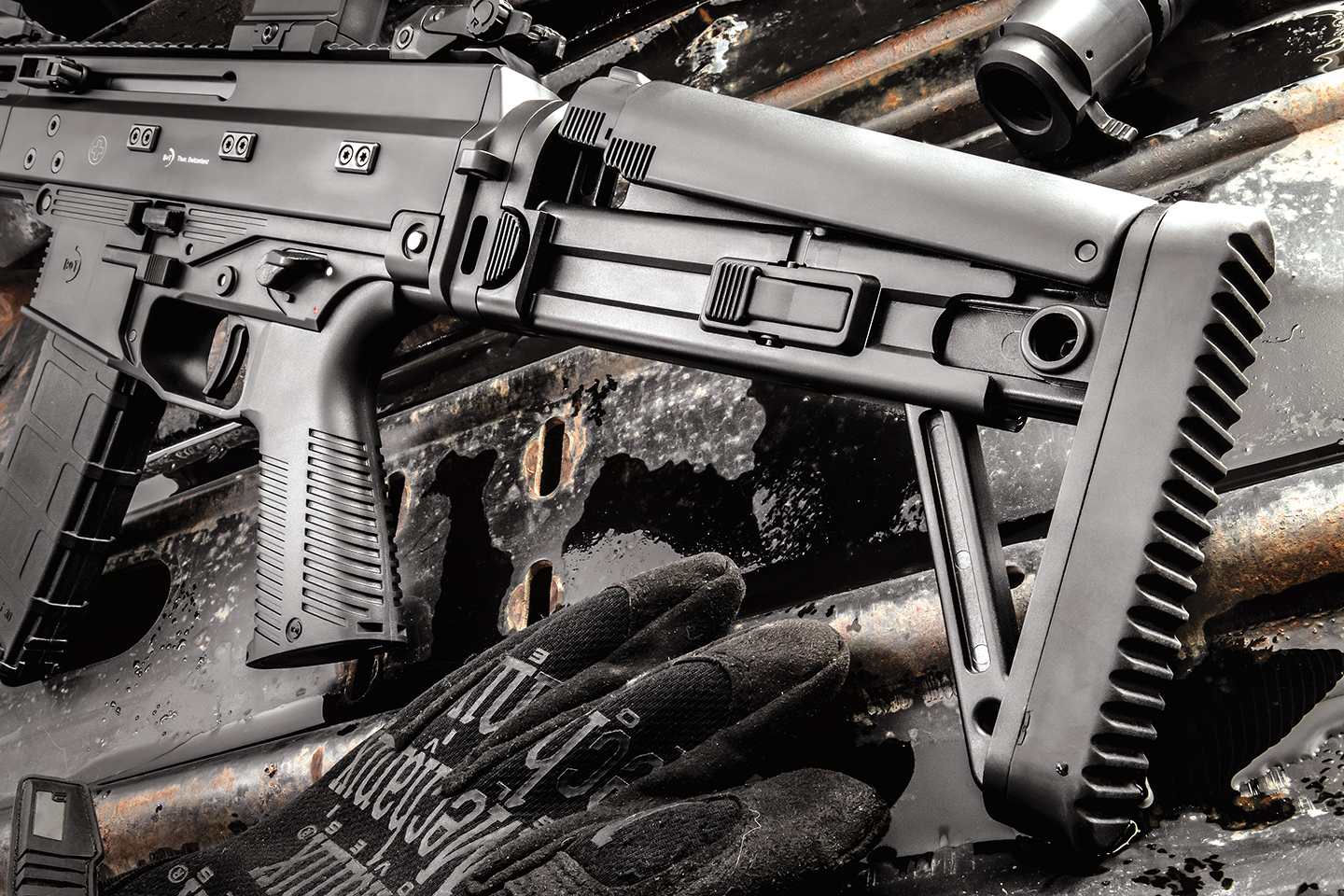
Range Time
Configured as an SBR, the APC223 PDW is almost perfect for any LE or self-defense use. I have long advocated for barrel lengths between 10.50 and 11.50 inches for patrol use as they are lighter, more compact, and provide ample ballistic efficiency at any practical defensive range. A 10.30-inch barrel is perfect for confined spaces at CQB distances and excels when used by entry teams, during vehicle operations, and for protection details. If you are going to use a suppressor, it generally puts you right at the typical carbine length (16 inches) while maintaining a good balance. Without the RBS suppressor, this APC223 was very handy and nicely balanced for working around obstacles or in and around my vehicle. Adding the suppressor did make it a tad barrel heavy but not at all unwieldy.
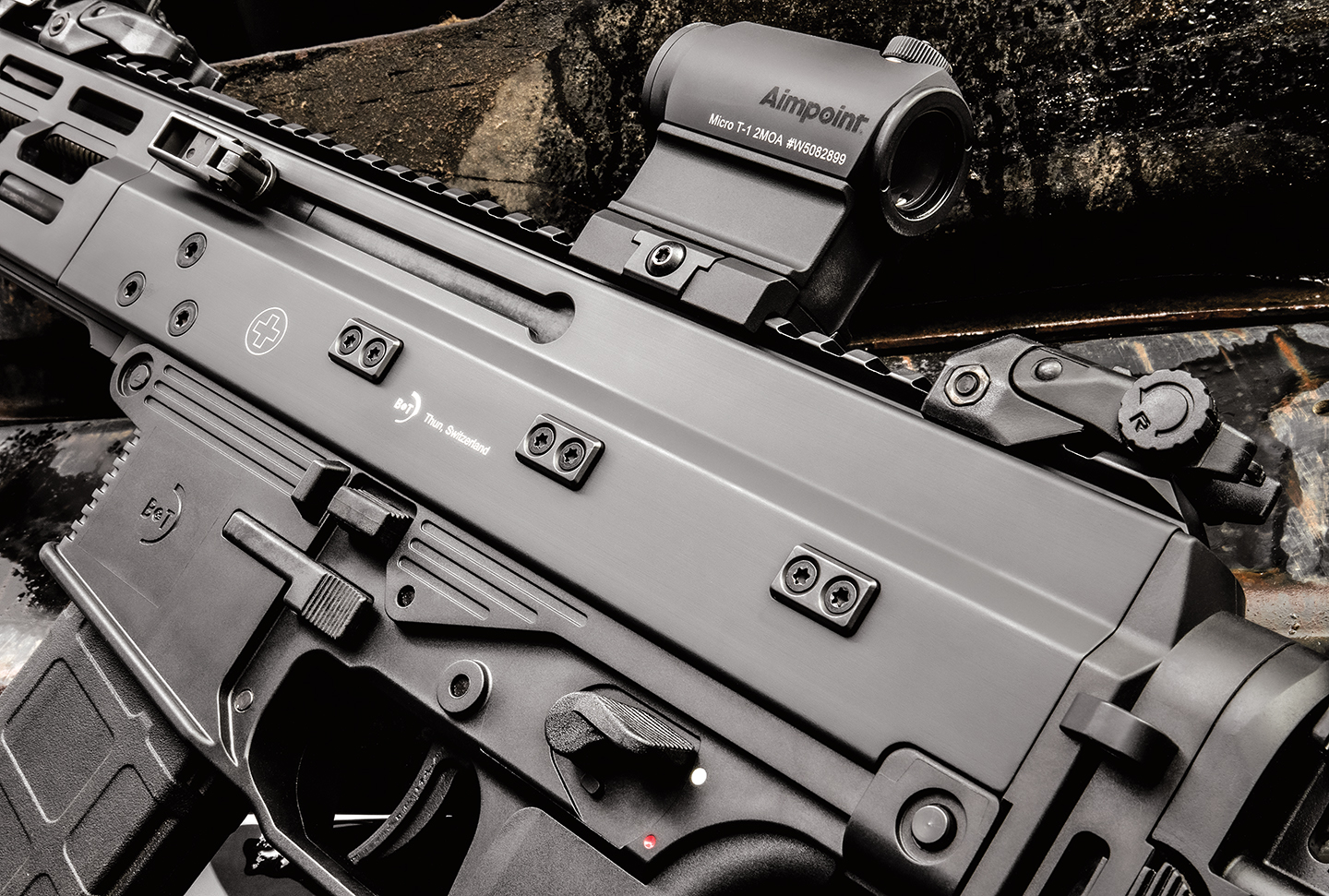
My preference remains a two-stage trigger for deployment rifles. The one B&T equips the APC223 with is light, but not too light, with a predictable first stage that breaks with very little overtravel. Take-up was longer than some, so it took some getting used to on rapid-fire strings, but once dialed in, it was plenty fast on doubles and triples.
Using the supplied Aimpoint Micro T1, it was zeroed and tested for groups at 50 yards, which is a typical distance for a non-magnifying red-dot sight. Accuracy was excellent, with just about everything I fed it, with my best group coming from Hornady 55-grain FMJ measuring in the 0.60-inch range. Hornady’s 55-grain Critical Defense was not far behind. The only round it did not seem to like much was the Speer 55-grain Gold Dot, which measured closer to 0.75 inches at 50 yards — still good performance, however. Shooting on steel at 200 and 300 meters, the rifle seemed to show a preference for the 62-grain loads, including some Federal M855 Green tip.
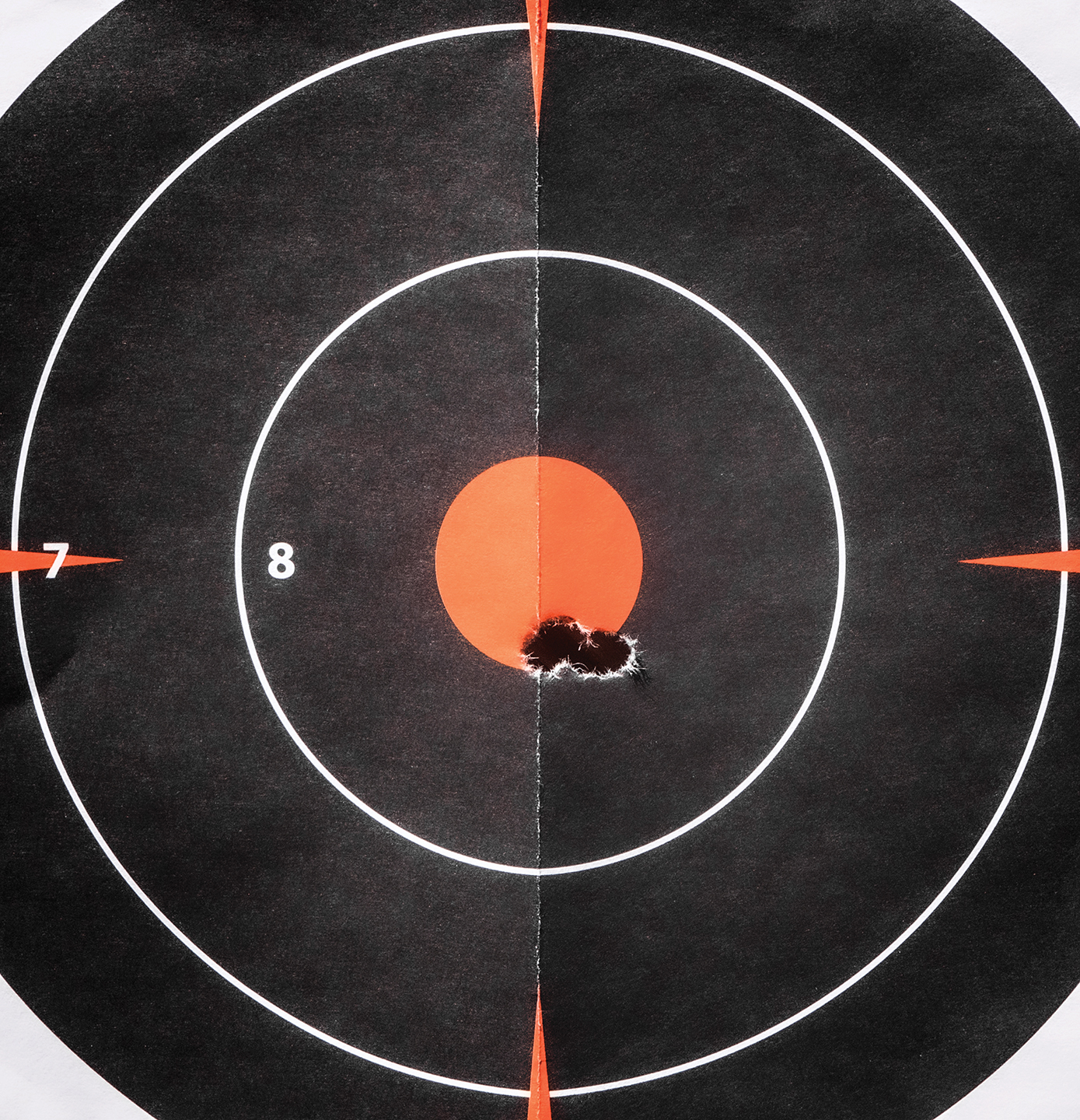
As expected, the RBS suppressor was very quiet. Backpressure was minimal, with very little felt recoil. Maybe most importantly, taking the can on and off, at 50 yards, there was no perceptible point-of-impact shift with any of the 55-grain ammunition, nor did it affect my ability to get roughly centered hits at 100 meters on the 12-inch square steel. Running 100-300 meter drills suppressed or unsuppressed did not alter my ability to get hits on typical silhouette steel with the same point-of-aim. This is a huge bonus for rifles used outside the range, as you can count on your optic’s zero to get solid hits out to 100 meters and even beyond. And, as mentioned before, the A2 flashider mount is about as reliable as it gets — I have yet to have one of these shoot loose.
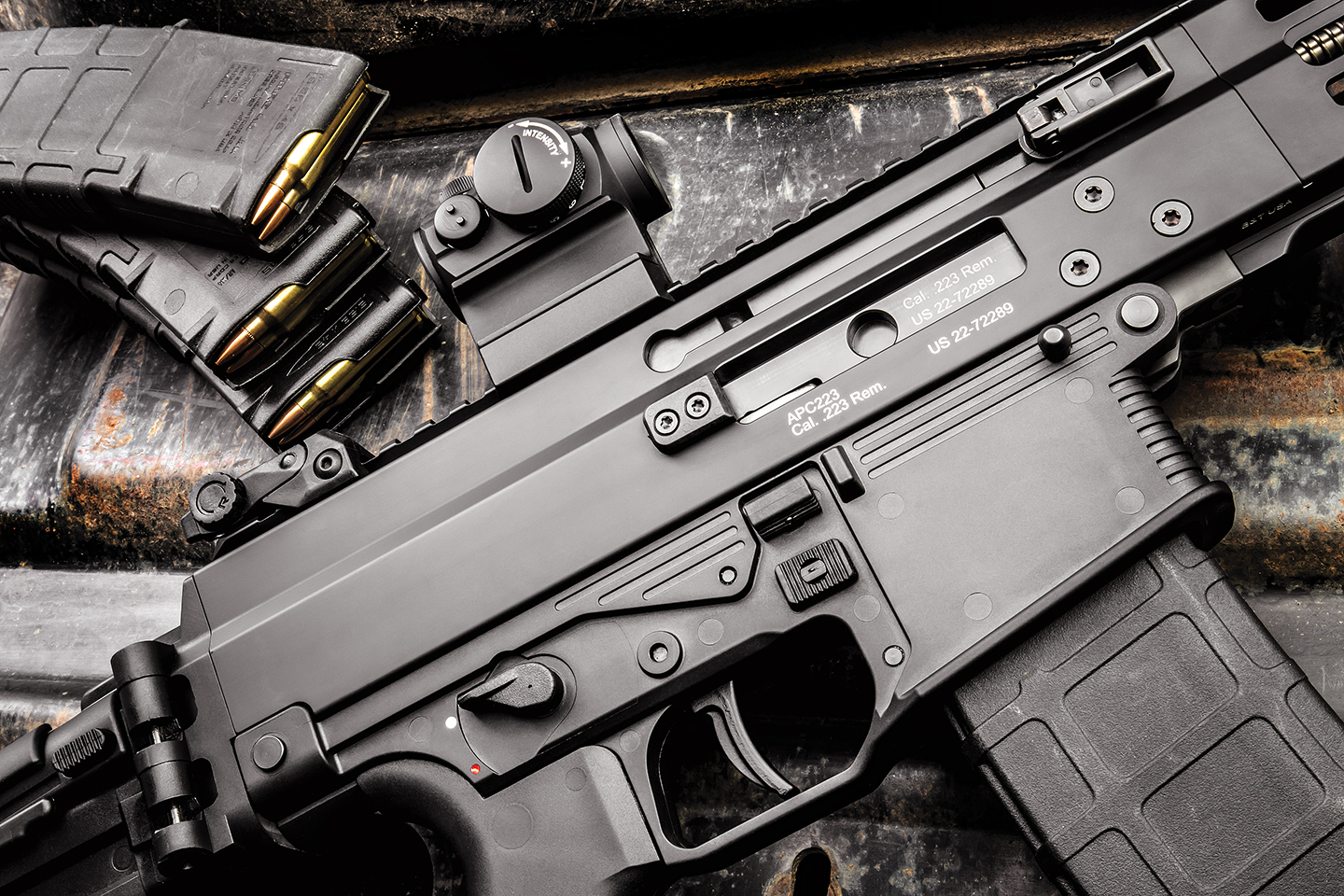
Bottom Line
As I have come to expect from B&T in general, the build quality of the APC223 surpasses expectations, as well as most comparable firearms. It feels more like a finely tuned machine than a bunch of polymer and metal slapped together. When you handle anything the company makes, the quality and attention to detail show through immediately. Nothing is loose fitting, and there is no rattling or unwanted movement in any of the component systems. Controls are positive with crisp and predictable operation. All told, you get the feel of a precision instrument without complication.
While I enjoyed testing their pistol-cartridge chambered SMG models, I am, at heart, a rifle guy, and I reallyenjoyed shooting this rifle. Solid, reliable, and accurate, its size made it very easy to use in real-world conditions. If you are not married to the AR platform and want something a bit different yet imminently capable, then make sure the BT USA APC223 is on the list. See an APC223 at your nearest dealer, or for more information, contact B&T USA; Tel.: (813) 653-1200; E-mail: [email protected]; Web: www.bt-usa.com.
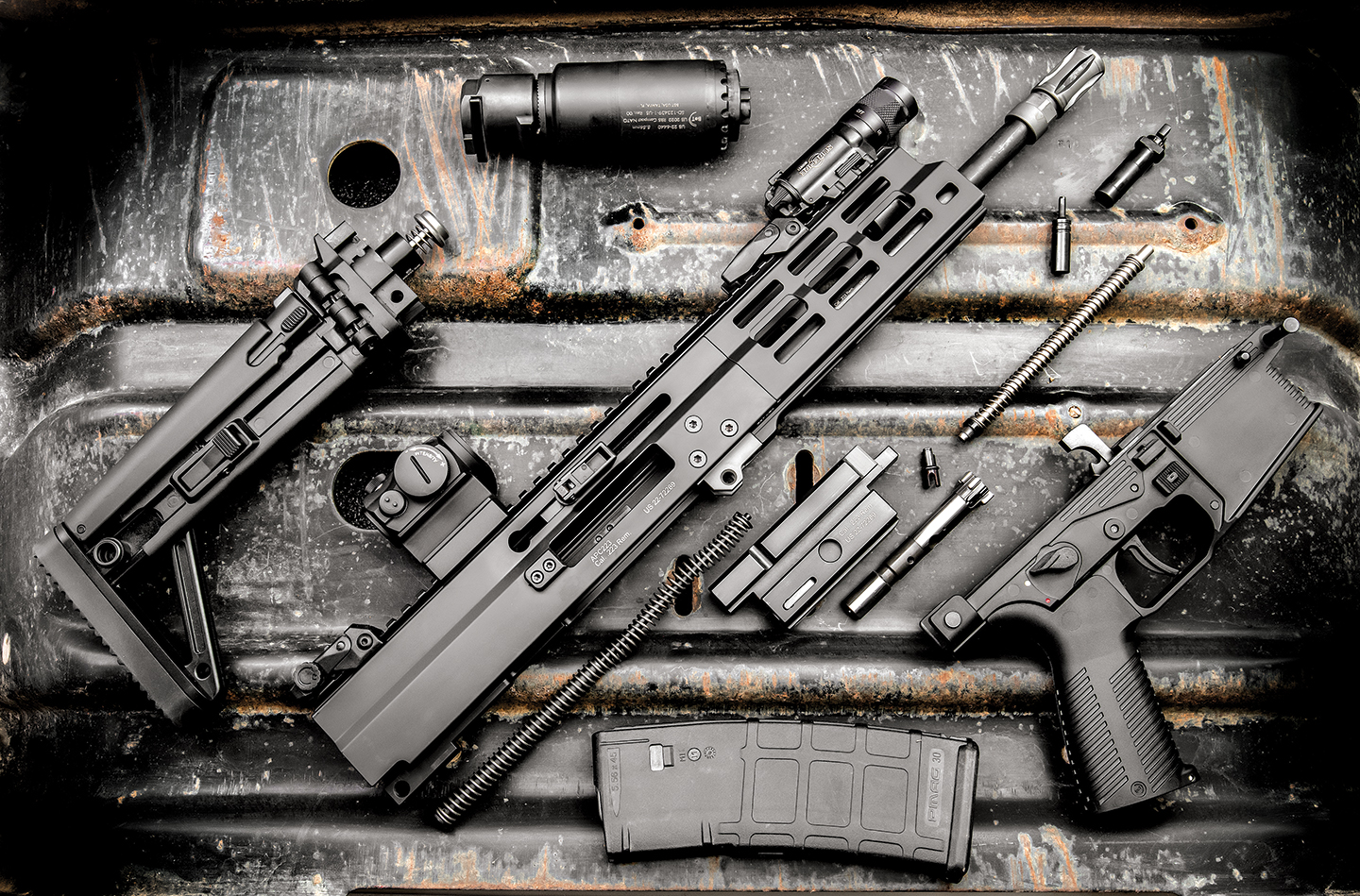
Specifications: B&T APC223 PDW
- Caliber: .223 Rem/5.56mm NATO
- Barrel: 10.30 inches
- OA Length: 21.60 inches
- Weight: 6.83 pounds
- Sights: Continuous top rail
- Furnature: MBT Stock/AR-type handgrip
- Action: Gas piston
- Finish: Black anodized
- Capacity: Accepts standard AR magazines
- MSRP: $3,400.00
B&T RBS 556 A2 Suppressor
- Construction: Stainless steel and Inconel
- Length: 6.60 inches (including mount)
- Weight: 22.6 ounces (including mount)
- Diameter: 1.92 inches
- Finish: Black Cerakote
- MSRP: $1,095.00
Ammunition Tested Velocity Group Size
Hornady 55 Grain FMJ 2750 0.60 Inches
Speer 55 Grain Gold Dot 2800 0.75 Inches
Hornady 55 critical Defense 2750 0.70 Inches
Federal M855 62 Grain GT 2830 0.80 Inches
